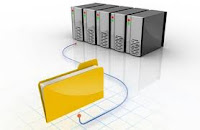Following A Web Design Process
Following a detailed website design and development process can speed up your work and help your client understand your role in the project.
What is Web Design Process ?
A Web development process is a documented outline of the steps needed to be taken from start to finish in order to complete a typical Web design project.Here is a standard process that was put together using examples from around the Web.
Planning
The planning stage is arguably the most important, because what’s decided and mapped here sets the stage for the entire project. This is also the stage that requires client interaction and the accompanying attention to detail.
1.Requirement Analysis
2.Project charter
3.Contracts that define roles, copyright and financial points
4.Gain access to servers and build folder structure
5.Determine required software and resources (photography, fonts, etc.)
2.Project charter
3.Contracts that define roles, copyright and financial points
4.Gain access to servers and build folder structure
5.Determine required software and resources (photography, fonts, etc.)
Design
The design stage typically involves moving the information outlined in the planning stage further into reality. The main deliverables are a documented site structure and, more importantly, a visual representation. Upon completion of the design phase, the website should more or less have taken shape, but for the absence of the content and special features.
1.Wire frame and design elements planning
2.Mock-ups based on requirements analysis
3.Review and approval cycle
4.Slice and code valid XHTML/CSS
2.Mock-ups based on requirements analysis
3.Review and approval cycle
4.Slice and code valid XHTML/CSS
Development
Development involves the bulk of the programming work, as well as loading content (whether by your team or the client’s). Keep code organized and commented, and refer constantly to the planning details as the full website takes shape. Take a strategic approach, and avoid future hassles by constantly testing as you go.
1.Build development framework.
2.Code templates for each page type.
3.Develop and test special features and interactivity.
4.Fill with content.
5.Test and verify links and functionality.
2.Code templates for each page type.
3.Develop and test special features and interactivity.
4.Fill with content.
5.Test and verify links and functionality.
Launch
The purpose of the launch phase is to prepare the website for public viewing. This requires final polishing of design elements, deep testing of interactivity and features and, most of all, a consideration of the user experience. An important early step in this phase is to move the website, if need be, to its permanent Web server. Testing in the production environment is important because different servers can have different features and unexpected behavior (e.g. different database host addresses).
1.Polishing
2.Transfer to live server
3.Testing
4.Final cross-browser check (IE, Firefox, Chrome, Safari, Opera)
2.Transfer to live server
3.Testing
4.Final cross-browser check (IE, Firefox, Chrome, Safari, Opera)
Documenting The Process
Create and retain two versions of your Web design process:
One for you or your team to use as a guide as you work on the back end, and one to share with clients. The differences between the two should be intrinsically clear: yours would be much more detailed and contain technical resources to help with development; the client’s would be a concise, non-technical map of the process from start to finish.
Common tools for documenting the business process are a simple Microsoft Word document, Microsoft Visio and mind-mapping software such as Free mind. If you’re ambitious, you could even develop your own internal Web-based tool.
For more information visit us at,
http://www.webindia.com







No comments:
Post a Comment